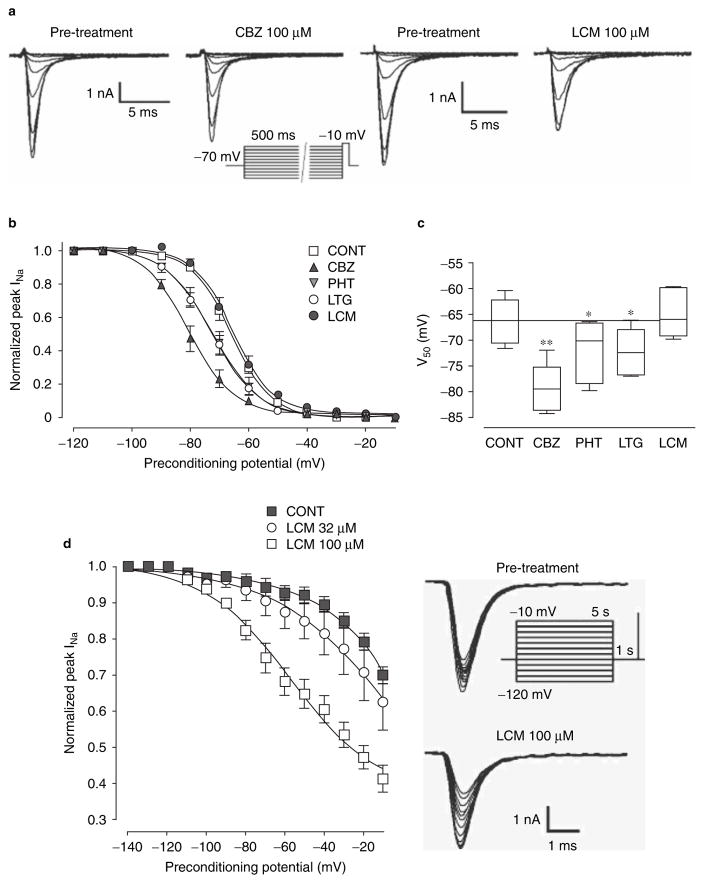Fig. 3.
(a–c): Steady-state fast inactivation is modulated by carbamazepine (CBZ), phenytoin (PHT) and lamotrigine (LTG), but not by lacosamide (LCM) in mouse neuroblastoma cells. Sodium current tracings during the stimulus protocol (shown under CBZ traces) used to study steady-state fast inactivation are shown in (a). Note in (b) that the fast inactivation curve is not affected by lacosamide, while it is shifted to the left by carbamazepine, phenytoin and lamotrigine. Note also that the LTG curve is superimposed on that of PHT. Histograms shown in (c) summarize the half-inactivation potentials (V50; mean ± standard error of the mean [SEM]) and demonstrate that lacosamide does not alter fast inactivation, while the other drugs shift V50 potentials toward hyperpolarized values. (d) Slow inactivation is modulated by lacosamide. Note that lacosamide shifts the slow inactivation curve to the left in a concentration-dependent manner. Data are presented as means ± SEM. The stimulus protocol and the tracings used to create the slow inactivation curves are shown on the right (modified from Errington et al.,[33] with permission). CONT = control; INa = sodium current; * p < 0.05, ** p < 0.001.

